In the coastal area of Zhanjiang, Guangdong, there is a "living fossil" with blue blood and a helmet-like shell- the horseshoe crab. It has existed for at least 445 million years, well before even dinosaurs existed, and remains nearly unchanged. At the end of 2021, the creature was listed as the second-level key protected wild animal in China.
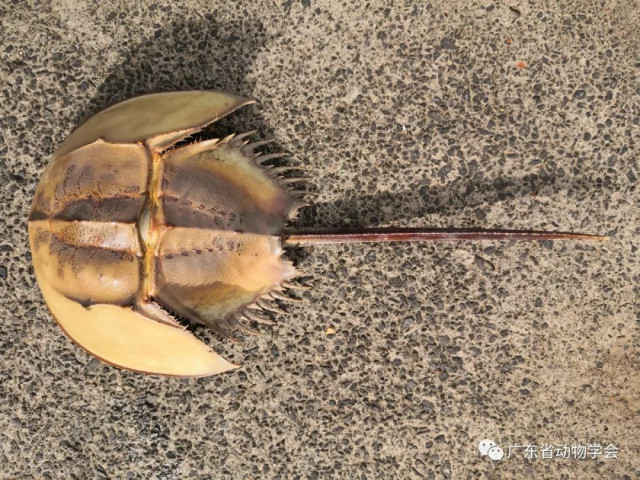
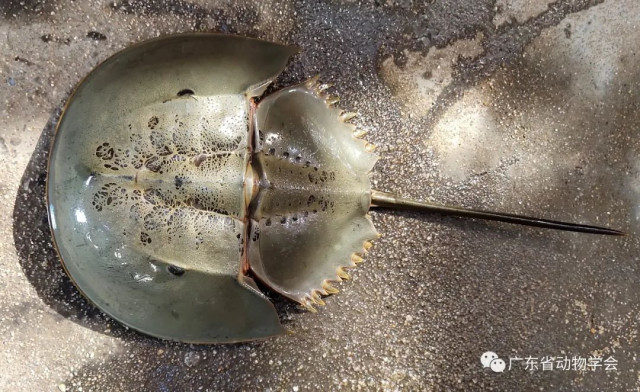
A horseshoe crab on the beach. (Photo: Guangdong Horseshoe Crab Ambassador)
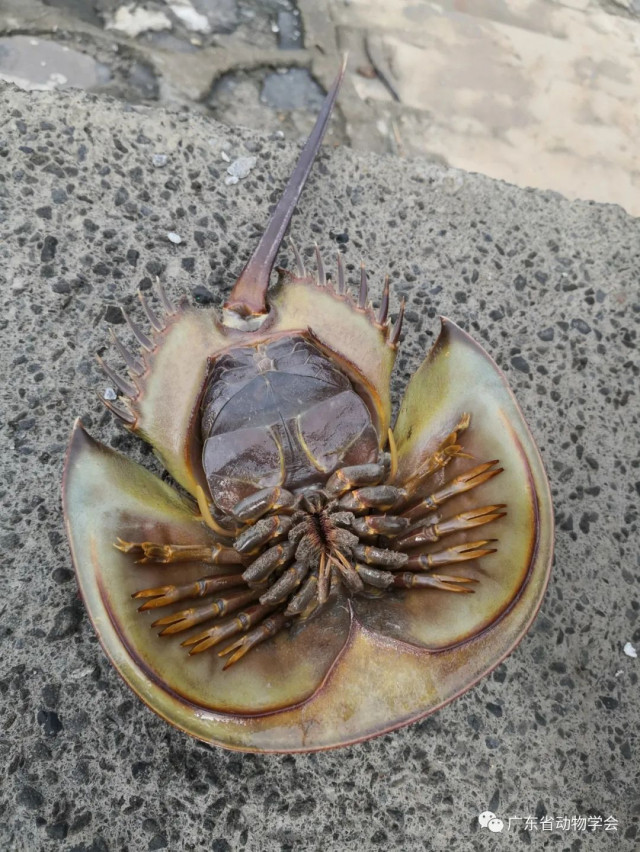
The underside of a horseshoe crab. (Photo: Guangdong Horseshoe Crab Ambassador)
There are four species of horseshoe crabs: Chinese horseshoe crab, round-tailed horseshoe crab, American horseshoe crab and Indo-Pacific horseshoe crab. About 95% of the Chinese horseshoe crabs live in China's coastal waters. Most of them gather in large nesting aggregations, or groups, on beaches particularly in Guangdong's Zhanjiang city.
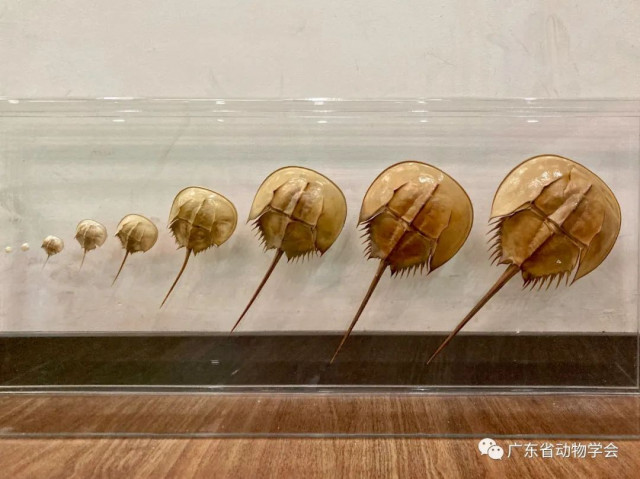
Specimens of the Horseshoe crab. (Photo: Guangdong Society of Zoology)
Horseshoe crabs are not actually crabs. They are closely related to spiders and other arachnids. Although having a little bit creepy appearance, they are not dangerous. They don't have teeth or jaws, and they're not venomous. Their long tails can be used to help turn the crab back if it gets flipped upside down on the beach.
Horseshoe crabs are an important part of the ecology of coastal communities. Their eggs are the major food source for immigrant shorebirds, sea turtles and fishes.
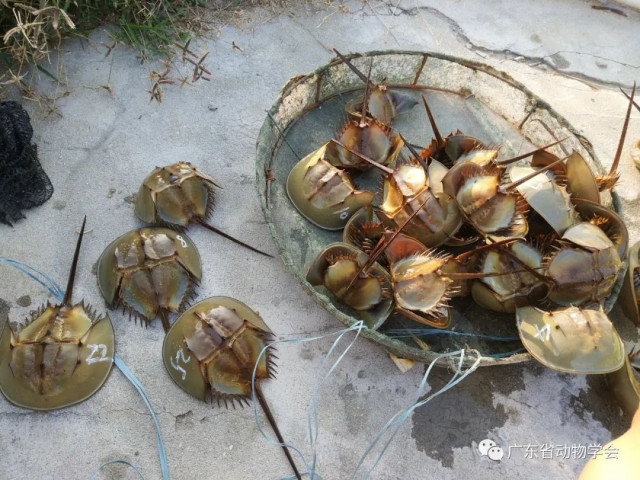
Horseshoe crabs caught by accident. (Photo: Guangdong Society of Zoology)
It is also extremely important to the biomedical industry because their unique, copper-based blue blood contains a substance called "Limulus Amebocyte Lysate (LAL)". The LAL is very sensitive to bacteria and will clump up in the presence of small amounts of bacterial toxins. The horseshoe crab's blood, therefore, can be used to test for the sterility of medical equipment and virtually all injectable drugs. The COVID-19 vaccine, the hope for humans to defeat pandemic, is also dependent on this substance.
The Department of Agriculture and Rural Affairs of Guangdong Province once held a science popularization lecture in Guangzhou Zoo and invited Jie Xiaoyong, a doctor of the Chinese Academy of Fishery Sciences, to share the history and current situation of Chinese horseshoe crabs. Residents in Guangdong have also established an organization- Guangdong Horseshoe Crab Ambassador - to appeal to more people to protect this creature.
"Public's strength is great. I hope everyone can give attention and protect the horseshoe crab together," said Jie.
Author | Ariel, Tonny (intern)
Editor | Wing, Olivia, Monica, Abby, Jerry
















